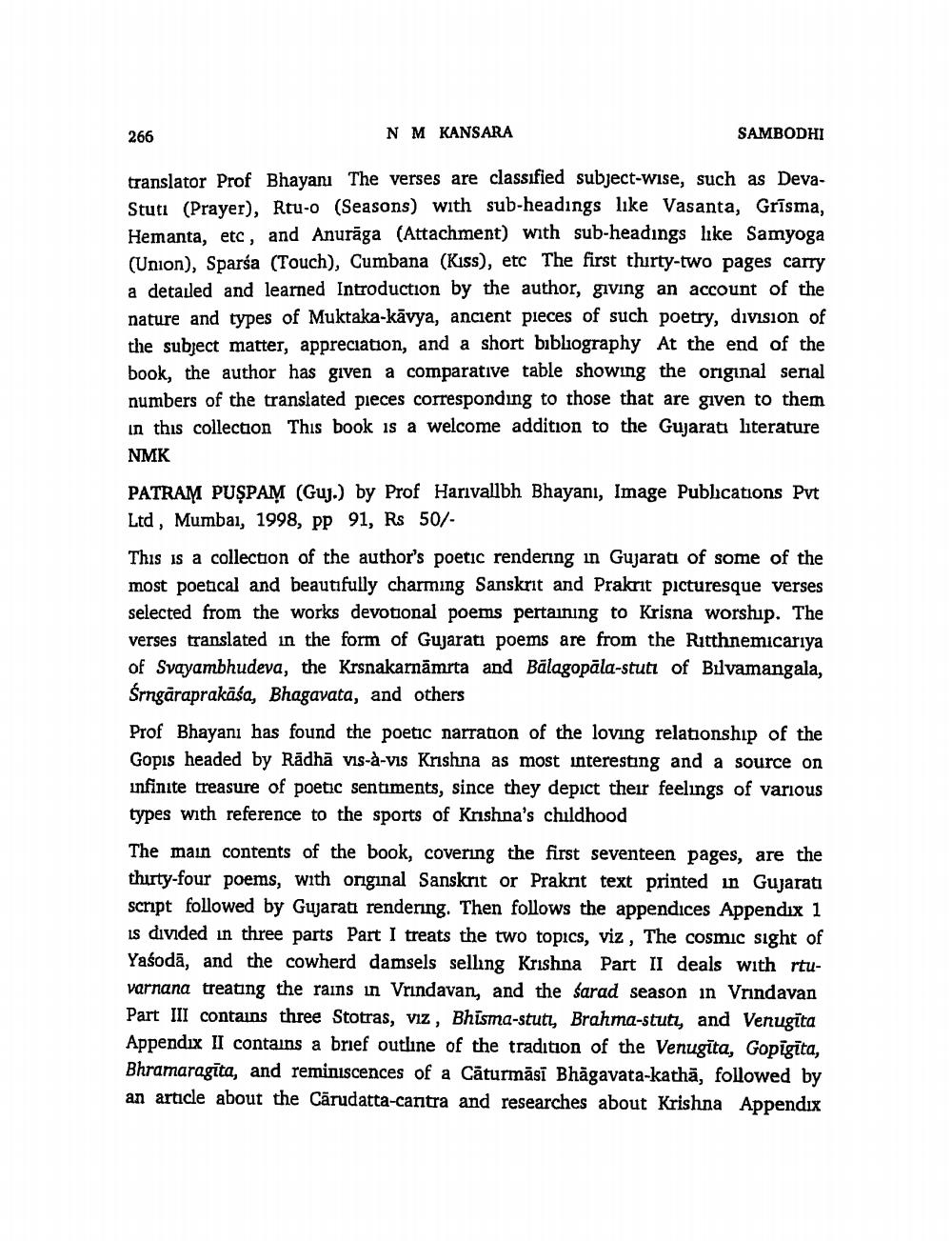________________
N M KANSARA
translator Prof Bhayanı The verses are classified subject-wise, such as DevaStuti (Prayer), Rtu-o (Seasons) with sub-headings like Vasanta, Grīsma, Hemanta, etc, and Anurliga (Attachment) with sub-headings like Samyoga (Union), Sparśa (Touch), Cumbana (Kiss), etc The first thirty-two pages carry a detailed and learned Introduction by the author, giving an account of the nature and types of Muktaka-kävya, ancient pieces of such poetry, division of the subject matter, appreciation, and a short bibliography At the end of the book, the author has given a comparative table showing the original serial numbers of the translated pieces corresponding to those that are given to them in this collection This book is a welcome addition to the Gujarati literature
NMK
266
SAMBODHI
PATRAM PUSPAM (Guj.) by Prof Harivallbh Bhayanı, Image Publications Pvt Ltd, Mumbai, 1998, pp 91, Rs 50/
This is a collection of the author's poetic rendering in Gujarati of some of the most poetical and beautifully charming Sanskrit and Prakrit picturesque verses selected from the works devotional poems pertaining to Krisna worship. The verses translated in the form of Gujarati poems are from the Ritthnemicariya of Svayambhudeva, the Krsnakarnämrta and Balagopala-stutt of Bilvamangala, Śrngaraprakāśa, Bhagavata, and others
Prof Bhayani has found the poetic narration of the loving relationship of the Gopis headed by Radha vis-à-vis Krishna as most interesting and a source on infinite treasure of poetic sentiments, since they depict their feelings of various types with reference to the sports of Krishna's childhood
The main contents of the book, covering the first seventeen pages, are the thirty-four poems, with original Sanskrit or Praknt text printed in Gujarati script followed by Gujarati rendering. Then follows the appendices Appendix 1 is divided in three parts Part I treats the two topics, viz, The cosmic sight of Yasoda, and the cowherd damsels selling Krishna Part II deals with rtuvarnana treating the rains in Vrindavan, and the sarad season in Vrindavan Part III contains three Stotras, viz, Bhisma-stutt, Brahma-stuti, and Venugita Appendix II contains a brief outline of the tradition of the Venugita, Gopigita, Bhramaragita, and reminiscences of a Caturmāsī Bhāgavata-katha, followed by an article about the Carudatta-cantra and researches about Krishna Appendix




